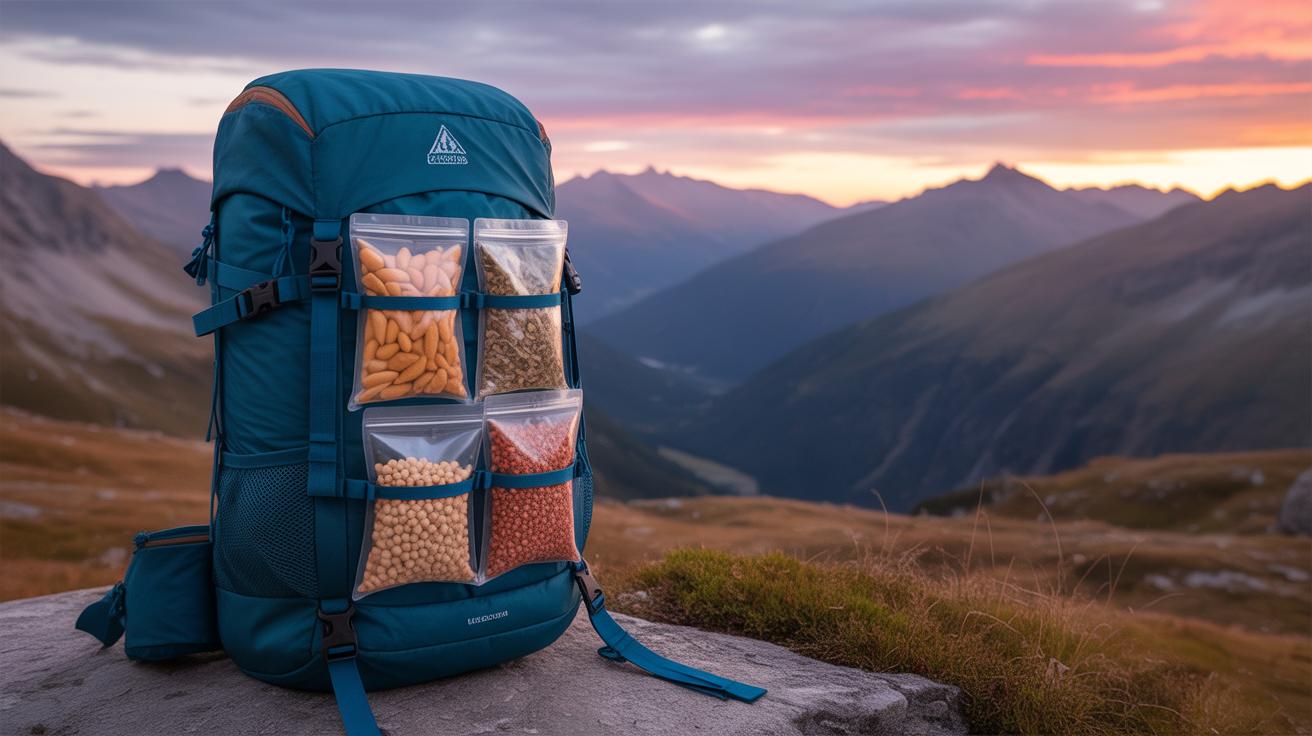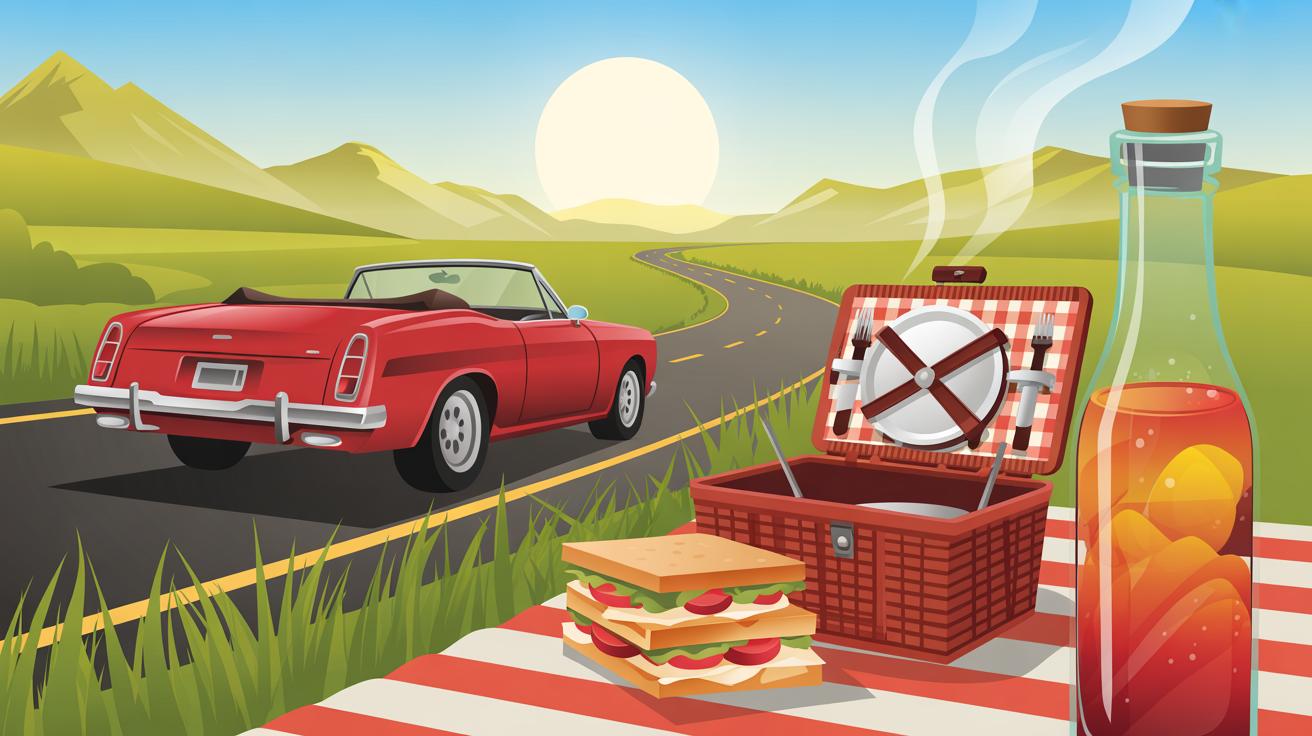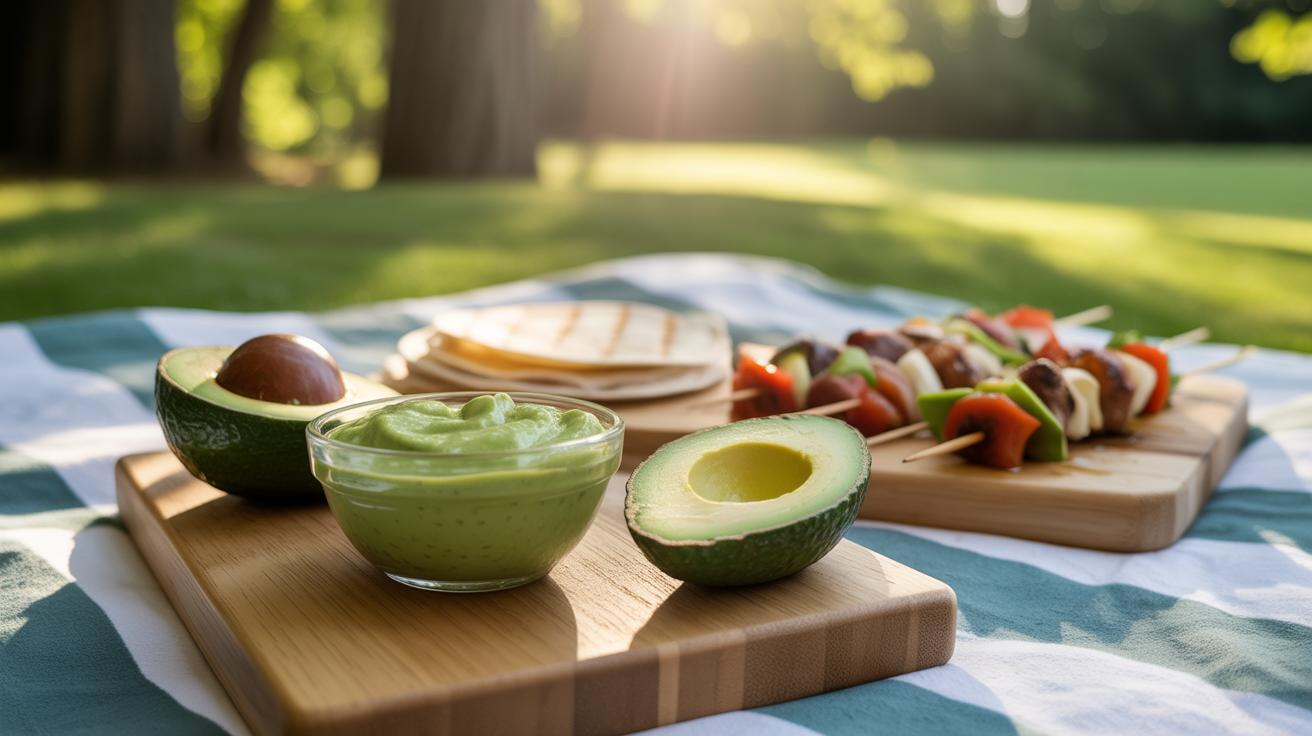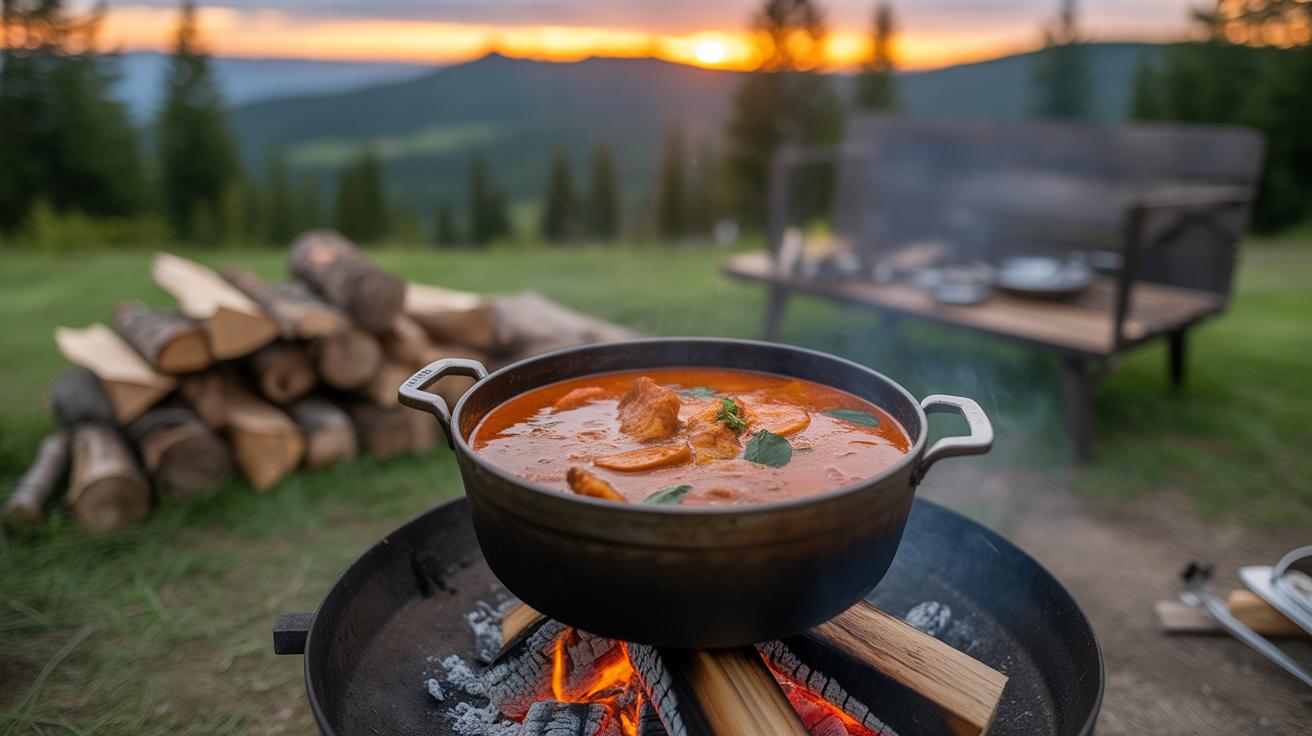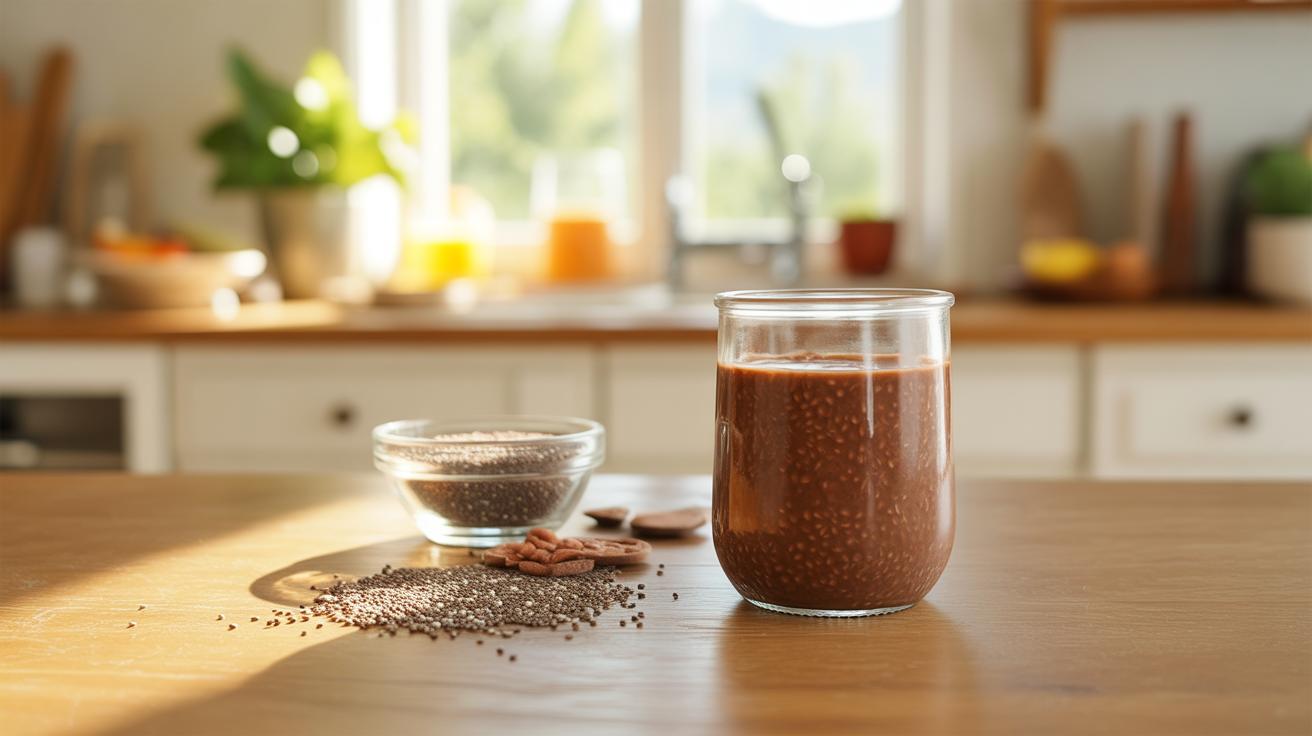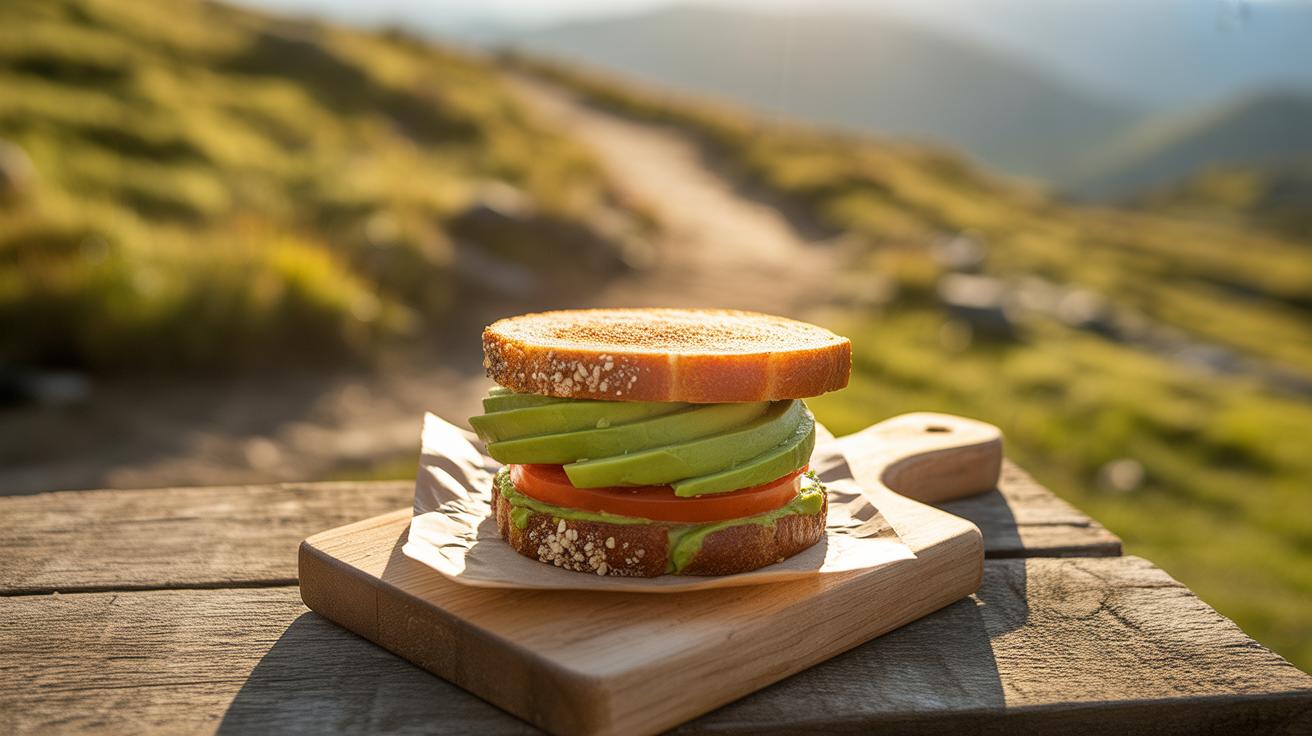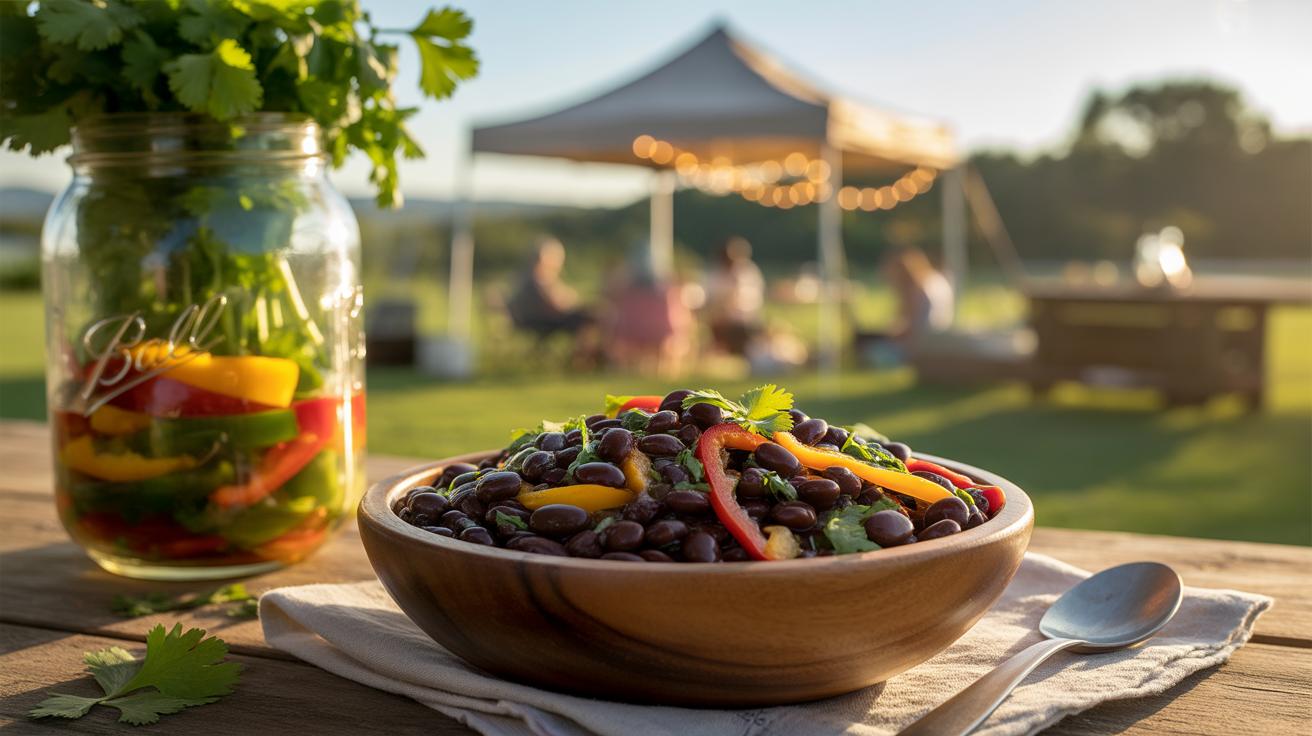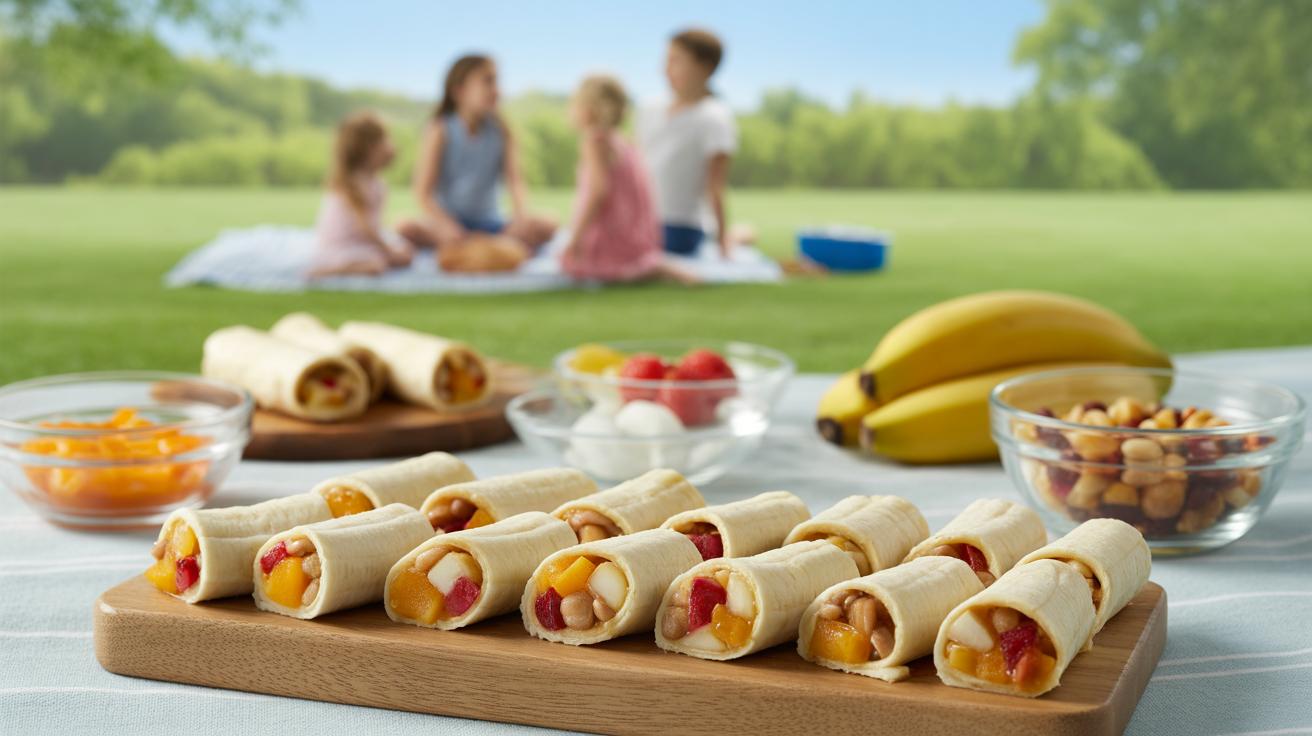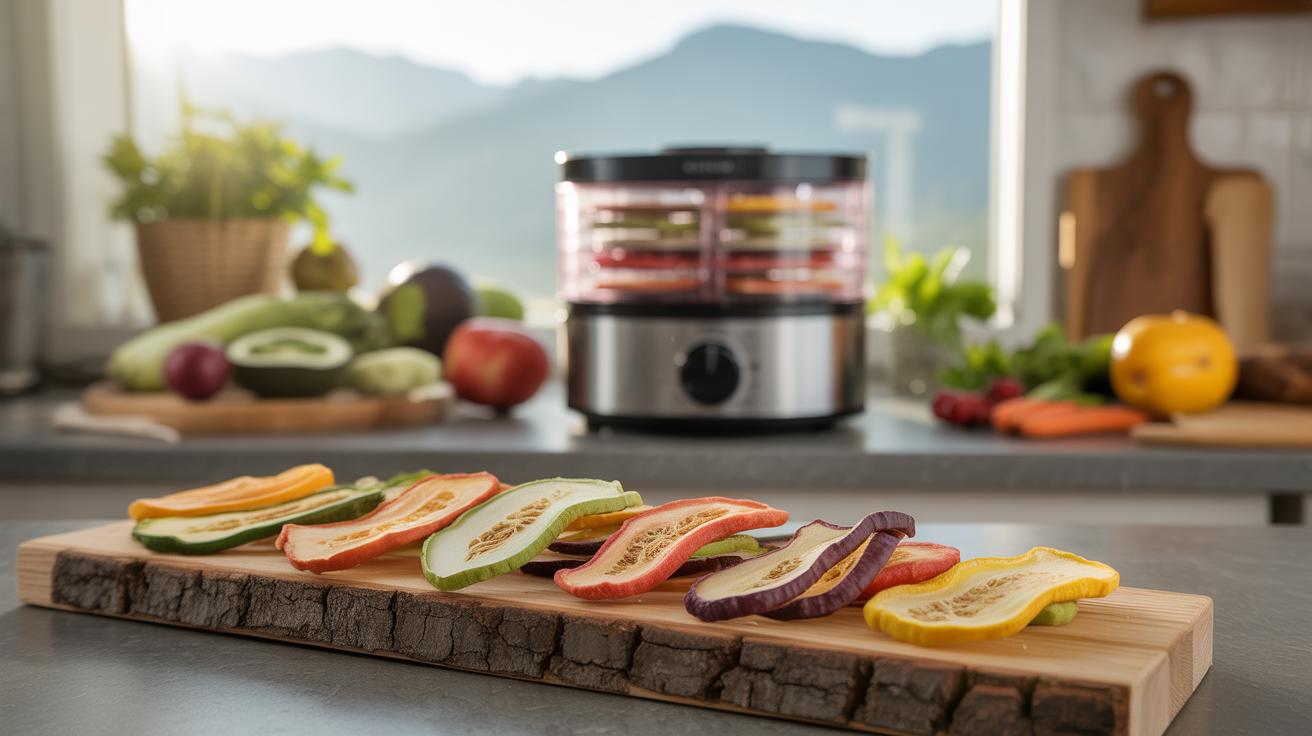Introduction
Camping dinners that are hearty and easy to carry make your outdoor trips more enjoyable. When you go camping or backpacking, you need meals that fit in your backpack, provide enough energy, and are easy to prepare. This article explores how to plan and prepare camping dinners that satisfy these needs. You will learn practical tips on selecting ingredients and cooking meals that keep you fueled during your adventure.
Whether you are hiking, camping, or backpacking, carrying lightweight, shelf-stable, and nutritious food is important. You don’t want to spend too much time cooking or carry heavy items. With the right choices, you can enjoy warm, filling dinners after a day outdoors. This guide will help you make your camping dinners both practical and delicious.
Understanding Your Camping Dinner Needs
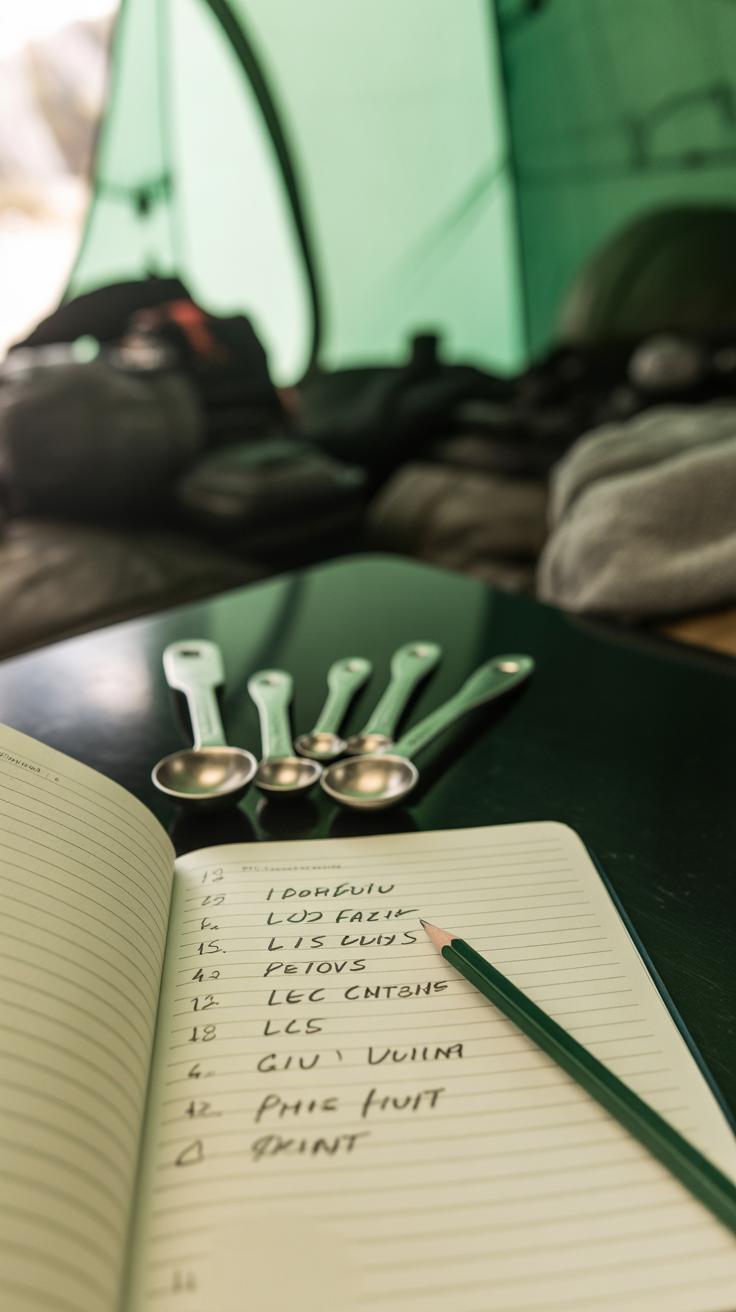
When planning your camping dinners, the balance between calorie needs, meal weight, and ease of preparation really shapes what you end up eating. You might think packing something heavy is fine for a short trip, but over a few days, every extra ounce makes a noticeable difference on your back. On the other hand, a meal that takes forever to cook can drain your energy and patience after a long day hiking.
Consider this: most people need around 2,500 to 3,000 calories daily when out on the trail, often more if the terrain is tough or the weather cold. Those calories aren’t just numbers; they’re your fuel, helping you keep warm, move, and recover. That’s why energy-dense foods—like nuts, dried meats, and fats—are so valuable. They pack a lot of punch without weighing you down.
Weight matters because the heavier your food, the heavier your backpack, and that extra burden can quickly tire you out. Light options include dehydrated meals, instant rice, or freeze-dried vegetables. Sometimes, you can reduce pack weight by repackaging foods—ditch bulky cans or packaging and use zip-lock bags or vacuum sealers. I’ve found that trimming off excess packaging saved me nearly a pound once, and surprisingly, it made dinner feel that much easier to handle.
Cooking time is another factor. A meal that takes hours isn’t really practical outdoors. Quick-cooking ingredients, or meals you can just heat and eat, save you fuel and time. Plus, less time fiddling with your stove means more time sitting, relaxing, maybe enjoying the sunset. So think about your dinner as more than just food—it’s part of your overall camping experience.
Selecting Ingredients for Camping Meals
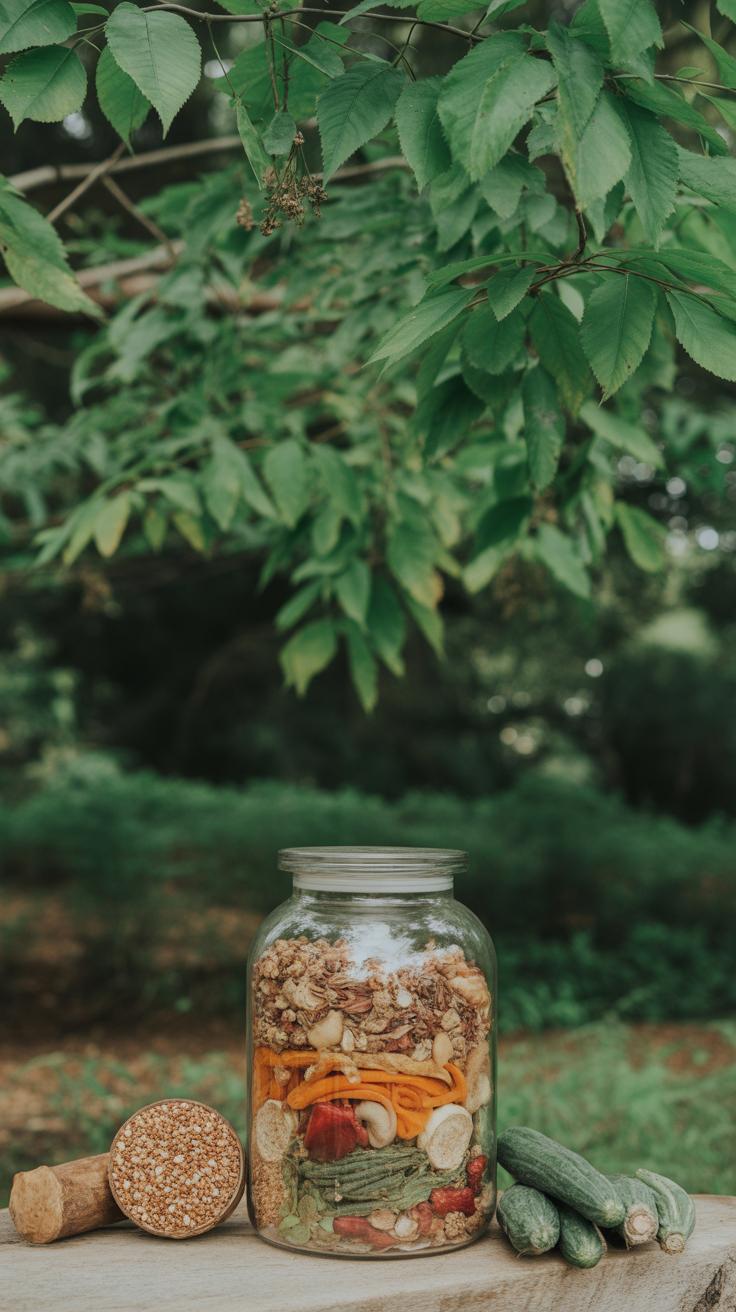
Shelf-Stable Foods You Can Rely On
When packing for camping dinners, choosing ingredients that last without refrigeration is key. There’s no point bringing fresh meat if it’s going to spoil on day two. So focus on things that stay good and keep well in your pack.
Think canned goods like beans, tomatoes, or tuna. These can add protein and flavor, and they’re usually ready to eat with minimal prep. Then there are dried pasta and rice, which are lightweight and versatile, perfect for filling carbs.
Freeze-dried meals might feel expensive, but they’re lightweight and pack serious nutrition. Plus, all you need is hot water, which makes cooking simple. You might hesitate about taste, but honestly, some brands surprise you.
Don’t forget nuts, seeds, and powdered milk or eggs. They don’t need cooling, provide fat and protein, and mix well into other dishes. In short, look for foods that are tough enough to handle some weather and light enough to carry without complaining.
Balancing Nutrition and Flavor
It’s tempting to just grab the most convenient items, but nutrition matters. You want your meals to fuel you properly and taste good enough so you don’t mind eating them.
Try to combine protein sources like canned chicken or powdered eggs with carbohydrates such as instant rice or dried pasta. Then add fats through nuts or olive oil packets. It’s not about gourmet meals—more about straightforward combinations that get the job done.
Spices or dried vegetables can make a big difference. Even a pinch of seasoning changes how you experience a meal, giving that feeling of “real food.” So, a little planning can lead to meals that feel satisfying and keep you energized for the next day.
Have you ever noticed how a simple twist, like adding garlic powder to instant noodles, makes you more likely to finish your meal? Tastes matter, even when only camping for a few days.
FreezeDried and Dehydrated Meals Explained
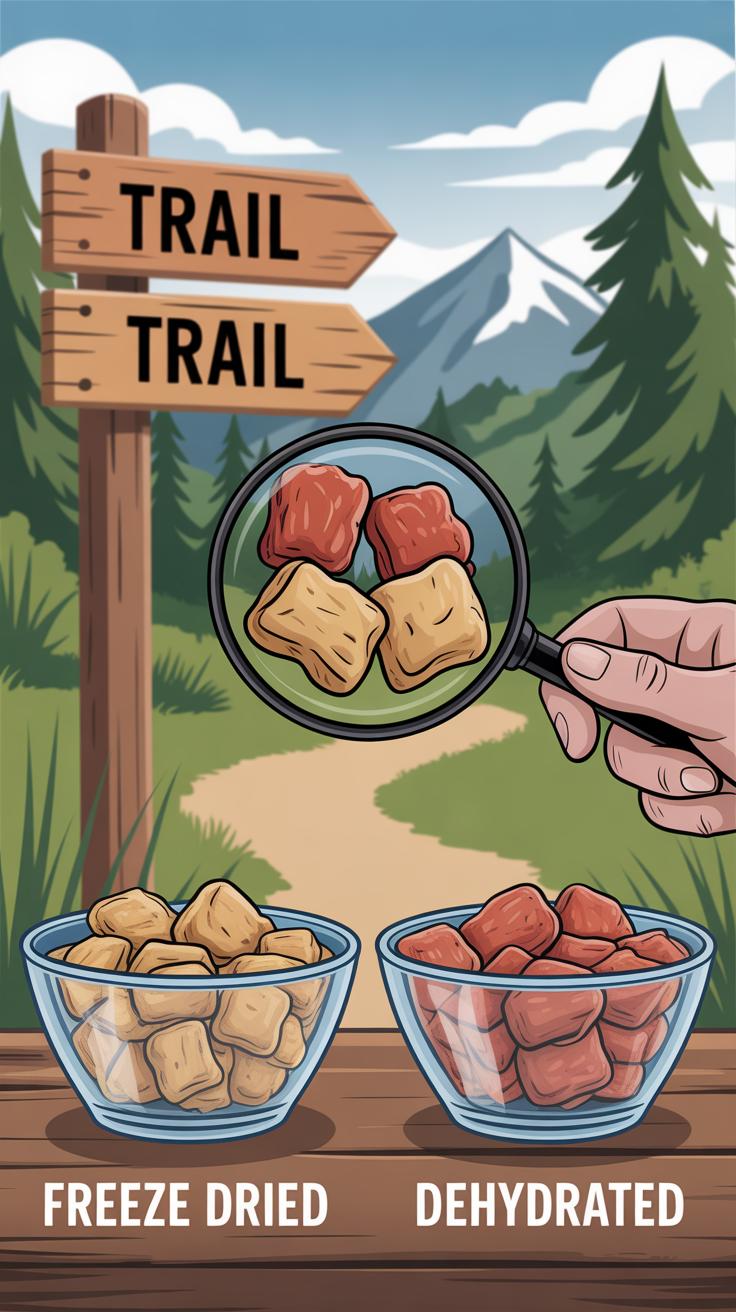
What Are Freeze-Dried Foods?
Freeze-dried foods go through a process where they’re frozen solid, then placed in a vacuum that pulls out almost all moisture. This leaves the food dry but structurally intact. Because the water is removed so gently, freeze-dried meals tend to keep their original taste and texture better than other methods.
One thing I’ve noticed is how fast these foods soak up water afterward. They rehydrate quickly because the freeze-drying leaves tiny pores in the food. Pour hot water on packed freeze-dried veggies or meals, and usually, in about 5 to 10 minutes, they’re close to fresh. That’s great when you want a warm, satisfying dinner without waiting forever or carrying lots of weight.
Using Dehydrated Ingredients in Recipes
Dehydrated foods are similar but often dried at higher temperatures, which sometimes changes the flavor or texture more. They need a bit more time to absorb water, so soaking them in warm water for 15-20 minutes works best. Sometimes simmering them helps, especially with beans or root vegetables.
When you cook with dehydrated ingredients, think about layering flavors. Since dehydration can dull some taste, adding spices or broths can make a big difference. I like to rehydrate ingredients separately first, then mix them in my pot to avoid mushy results.
It also pays to experiment. Maybe add dehydrated mushrooms or onions to a simple rice dish to make it more interesting. Or swap in freeze-dried fruit to lift a bland meal. These meals aren’t just about convenience—they can surprise you.
Easy Cooking Methods for Camping Dinners
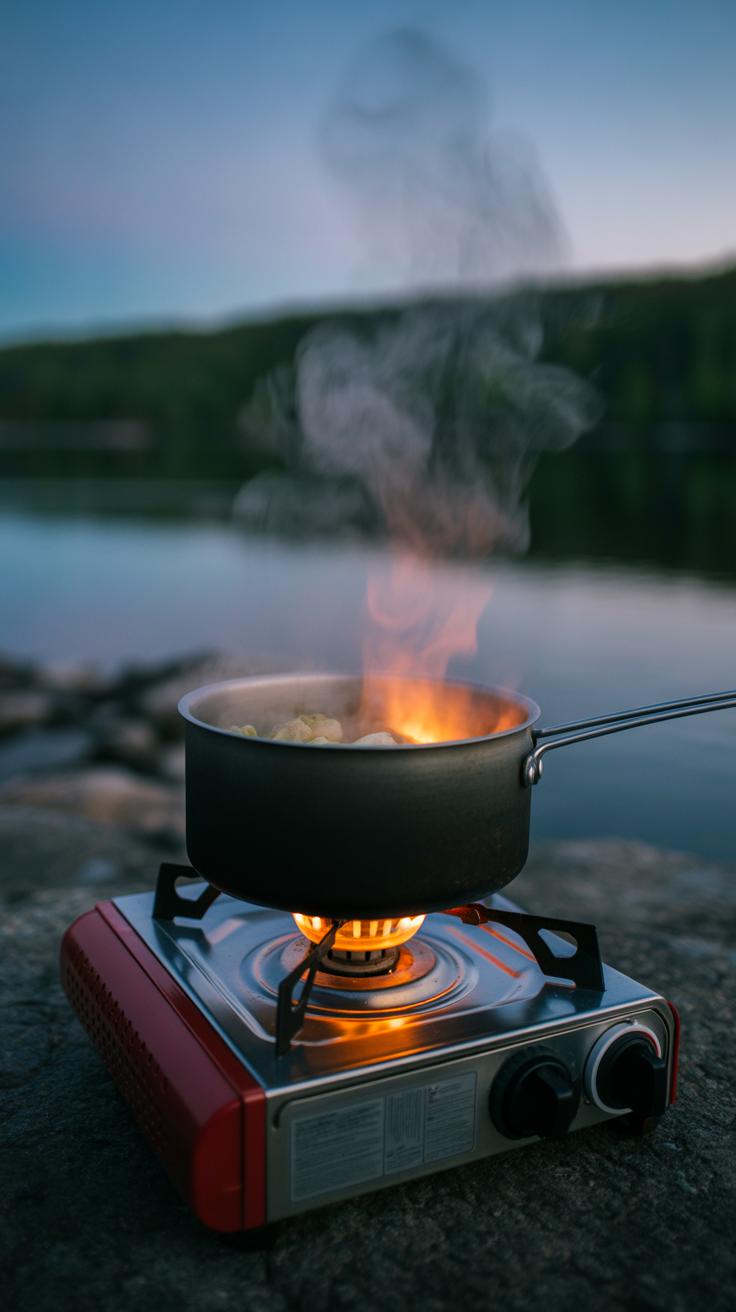
When you’re out camping, you want your dinner to be satisfying without turning into a long, complicated ordeal. Simple cooking methods work best. You don’t need a ton of gear or time.
One-Pot Cooking Over a Camp Stove
One-pot meals are lifesavers on the trail. You toss everything into a single pot on your camp stove, and minutes later, you’re eating. Think pasta with canned veggies and a pouch of seasoned tuna, or rice with beans and pre-cooked sausage pieces.
This approach limits your dishes. Less scrubbing when you’re tired. It’s also flexible—you can swap ingredients based on what you have. A little oil, spices, and time to simmer can turn simple staples into something decent. Plus, watching a pot simmer over a camp stove is kind of relaxing. Don’t underestimate a quick stew or a one-pot chili as a wholesome dinner. Sometimes it’s those easy meals that feel best after a long day outdoors.
No-Cook Dinner Options
There are nights when cooking just isn’t appealing. Maybe it’s late, or you’re worn out. That’s where no-cook dinners come in handy. You can grab some ready-to-eat freeze-dried snacks, nut butters, jerky, or even canned fish. Mix canned beans, fresh tomatoes, and pre-shredded cheese for a quick, cold meal that doesn’t demand heat.
Salads with grains that soak in water earlier in the day can save time too. Sometimes, skipping the cook can show you how resourceful you really are. And honestly, there’s a quiet pleasure in eating something simple, with minimal fuss. Could a simple cheese and crispbread plate work better than a fancy hot meal? Maybe it depends on how hungry you are—but it’s good to have options that don’t require the stove.
Packing Your Camping Dinner Efficiently
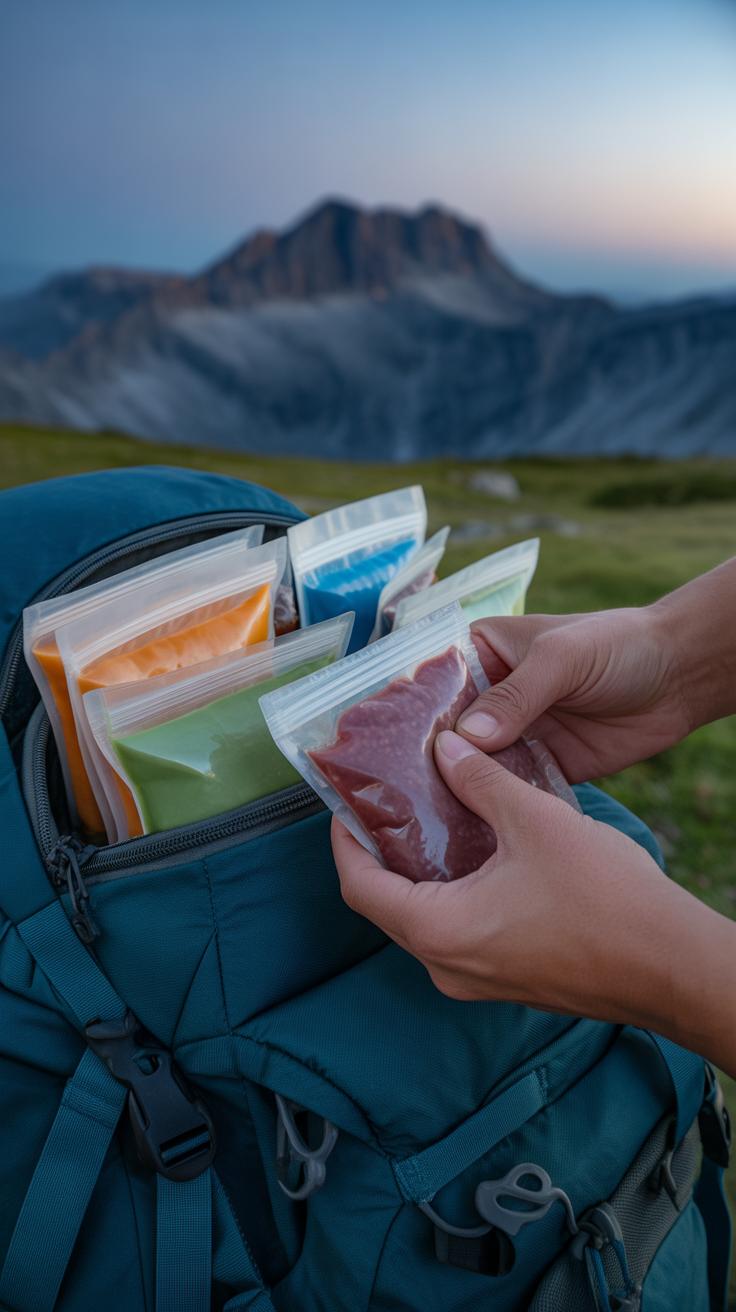
Packing food for camping isn’t just about stuffing everything into your backpack. You want to squeeze space while keeping weight down and preventing spoilage. One thing I often find helpful is using lightweight containers and bags that seal tightly. Think small, resealable plastic bags or thin silicone containers—those can really shrink your load compared to bulky Tupperware. Plus, resealable bags double as portion control, which saves you from hauling leftovers you won’t eat.
When it comes to organizing, try sorting meals not just by day but also by meal type. Labeling each container—like “Day 2 dinner” or “Breakfast 3”—makes mornings and evenings less chaotic. I sometimes toss a sharpie into my kit just for this purpose. This way, you don’t have to dig through everything when hunger hits, and it’s easier to keep track of what’s left.
One trick I keep forgetting but always makes a difference is to stack flatter items at the bottom. For instance:
- Freeze-dried vegetables in thin packets
- Dehydrated meats in tiny vacuum-sealed bags
- Lightweight spices or sauce powders in small bottles
Packing this way not only saves space but helps prevent crushing fragile ingredients. And if you pack meals by day, you avoid carrying what you won’t need right away—which means less weight on your back on day one, for example.
Does it feel like over-planning? Maybe a bit. But when you’ve spent hours hiking and want to relax, having your meals sorted saves time and those grumbly moments of “what was that again?”
Planning Your Camping Dinner Menu
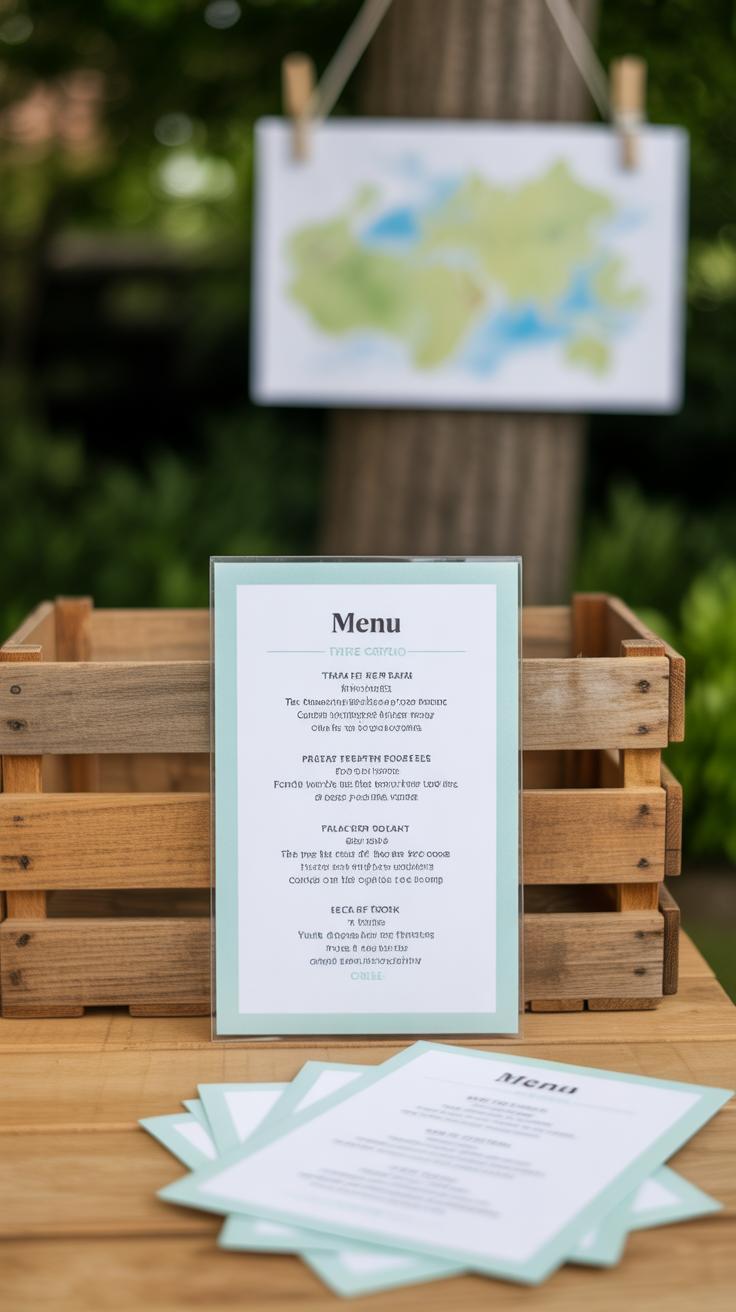
When planning your camping dinners, try to balance nutrition and ease of preparation. You want meals that fuel your body after a day outdoors but don’t require complicated cooking or heavy ingredients. Think about including a mix of proteins, carbs, and fats—each meal should help restore your energy and keep you satisfied without weighing down your pack.
For variety, rotate between meals with different main ingredients to avoid getting bored. Maybe a pasta dish one night, then a bean stew the next. It’s easy to fall into a routine, but small changes make a big difference in keeping mealtime enjoyable—and you probably want to look forward to dinner after a day of hiking.
Sample Menu Ideas for Multi-Day Trips
Here’s a rough idea for three days of camping dinners that won’t overwhelm your prep or pack:
- Day 1: Instant rice with dried vegetables and a pouch of tuna or chicken, seasoned with some dried herbs and olive oil.
- Day 2: Dehydrated bean chili—just add hot water, simmer if you can—and enjoy with a hard flatbread.
- Day 3: Lentil pasta tossed with a powdered sauce mix and freeze-dried veggies, plus a sprinkle of grated Parmesan or a cheese alternative.
Notice these combine shelf-stable items with some fresh touches you might pick up on the way or substitute according to what feels right. They are simple but cover necessary nutrients.
Adjusting Menus for Group Sizes and Preferences
Feeding a group adds complexity. For bigger groups, bulk foods like rice, pasta, and beans stretch well, but sizing meals can get tricky. It helps to prepare components that mix and match—say, a pot of rice alongside a couple of protein options—so people can assemble plates to their tastes.
Dietary restrictions mean you might need multiple meal versions or snacks to fill gaps. Gluten-free, vegetarian, or allergy-friendly options take some extra packing but can be less fuss with pre-planned swaps (think quinoa instead of pasta, or tofu instead of meat). Don’t underestimate the power of simple, customizable meals for keeping everyone happy.
When planning, ask yourself: How hungry will you be? What tastes will you miss? Will a meal feel too heavy after a hike? Adjust portions and ingredients as you learn what works, and don’t be shy about tweaking menus mid-trip if necessary. You’ll find it’s part of the outdoor cooking rhythm.
Tips for Cooking and Eating Outdoors

Cooking outdoors is quite different from your kitchen routine. You have less space, fewer tools, and the elements to consider. One trick I’ve found helpful is to organize your cooking gear before you start. Lay out all ingredients and utensils so you won’t be scrambling mid-meal. It makes the whole process smoother, and you spend less time fiddling around.
When it comes to cleanup, carrying a small basin or collapsible sink can really make a difference. Washing dishes immediately after eating prevents leftover food from attracting animals or bugs. Pack biodegradable soap to minimize environmental impact, and maybe bring along reusable cloths instead of paper towels to cut down on trash. A small mesh bag for drying utensils is another handy addition I sometimes forget but wish I didn’t.
Safe Food Handling and Storage
Keeping your food safe outdoors is trickier than at home. You have to think about temperature control and wildlife on a new level. Use insulated coolers with ice packs when possible, especially for perishables like meats and dairy. Frozen items can keep things cold longer but require planning to eat before they thaw completely. I try to separate items within my cooler so the stuff I need first stays accessible without letting warm air in everywhere.
Wildlife is another big concern. Hanging food in a tree or using bear canisters can protect your meals from curious critters. Sometimes, depending on where you camp, just locking food in your car or food storage lockers is enough. It’s frustrating to deal with, but a small effort here saves headaches later. Food odors attract animals, so sealing containers tightly and double-bagging strong-smelling items feels necessary—even if it seems excessive.
Minimizing Cooking Time and Cleanup
When you’re outdoors, every extra minute spent cooking is time lost enjoying the surroundings. I lean on meals that cook quickly or don’t need much prep—think one-pot dishes or ready-to-eat options like trail mix and cured meats. Pre-chopping veggies and marinating proteins at home makes cooking faster and reduces mess.
Cleanup shines when you limit pots and pans. Using foil packets, cooking in a single skillet, or opting for meals straight from the package cuts down on what you have to wash. Sometimes, skipping silverware for sturdy wooden spoons or sporks reduces items to clean. It might feel a bit minimalistic, but the payoff is more relaxed evenings by the campfire, less fuss, and fewer greasy containers taking up space in your backpack.
Adapting Your Camping Dinners Seasonally
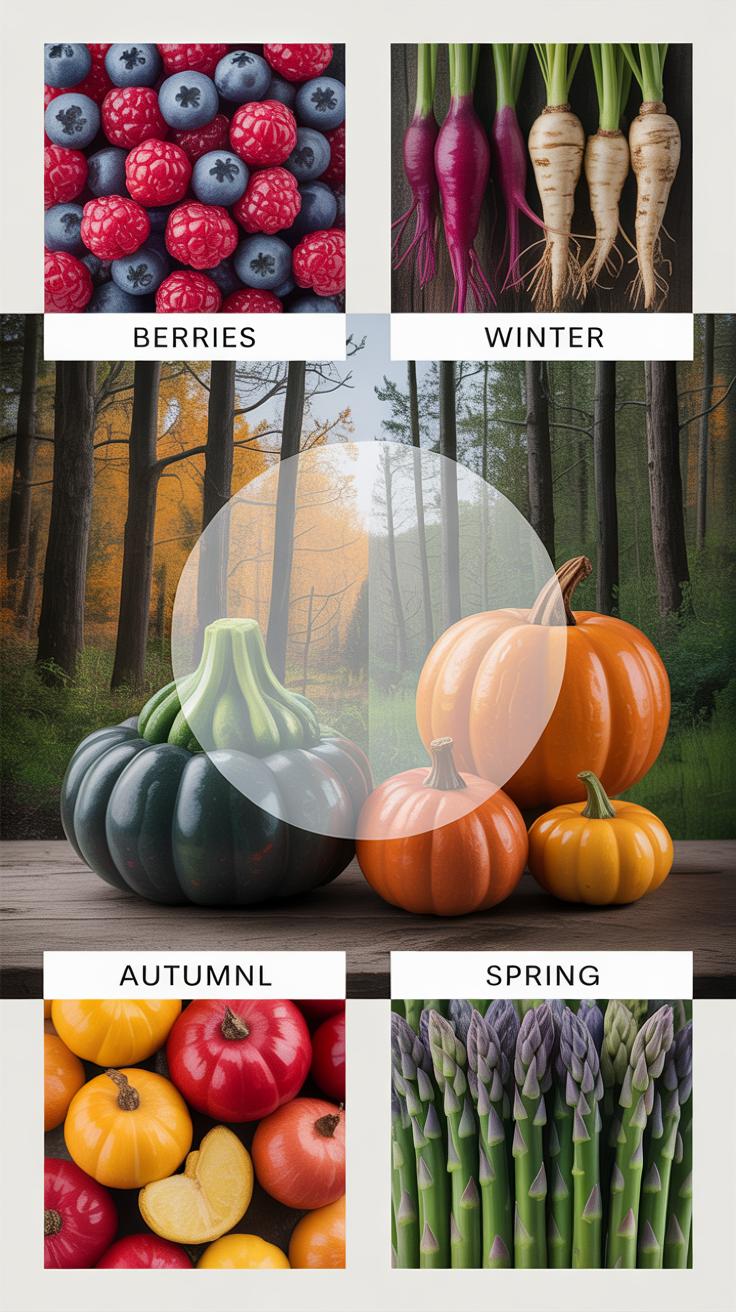
Camping meals change a lot depending on the season. When the temperature drops, your body craves something more substantial, something warming. On cold nights, I find a hot stew or a bowl of thick soup isn’t just comforting—it’s almost necessary to keep energy up and stay warm. Try meals that cook easily but provide enough calories, like chili or pasta with a hearty sauce. Don’t forget to drink warm fluids; they help more than you might expect in cold weather. Keeping your hands and feet warm while cooking also helps avoid that chill creeping in.
In contrast, when it’s hot, your appetite tends to shift. Heavy, hot meals might feel less appealing or even taxing. That’s when simple, fresh, no-cook options come in handy. Think cold pasta salads, wraps with hummus and fresh veggies, or even fruit and nut mixes. These meals save time and energy, and you won’t have to heat up your camp stove as much—plus, they usually keep you from feeling sluggish in the heat. Soups or cooked dinners just don’t feel right under a blazing sun, at least not for me.
Seasonal shifts also affect what you pack. In winter, add things like instant oatmeal or freeze-dried soups for quick warmth. Summer, on the other hand, calls for more fresh produce, nuts, and perhaps some ready-to-eat jerky. Are you ready to tweak your menus alongside the changing weather? It might feel like extra work, but it’s worth it to stay comfortable and well-fueled.
Warm Foods for Cold Weather Camping
Cold weather demands warm, calorie-dense meals that help your body generate heat. I’ve found nothing beats a hot, savory dinner after a day in the cold—think stews, chili, or even something as simple as instant mashed potatoes with canned chicken. Carrying dehydrated meals that only need boiling water can save time and effort but don’t be shy to throw in fresh ingredients if you can.
Here are some meal ideas that worked for me:
– Lentil or bean soup with added spices
– Instant noodles boosted with freeze-dried veggies and tuna
– Warm rice bowls with packaged curry paste and veggies
Warm drinks, like herbal teas or hot chocolate, also help maintain good morale and prevent dehydration. Stirring your meal regularly while cooking can help it cook evenly. It’s a small thing but makes a noticeable difference when the temperature’s low.
Light and Fresh Meals for Warm Weather
On hotter days, I prefer meals that are quick, don’t require cooking, or can be served cool. Heavy foods can feel like a punishment when the heat is on. A no-cook dinner might be a wrap with nut butter and fresh fruit, or a salad with canned beans, chopped vegetables, and a drizzle of olive oil. Sometimes, cold pasta tossed with a bit of pesto and sun-dried tomatoes has been just perfect.
Here are some simple ideas:
– Cold quinoa salad with chopped cucumber, tomato, and canned chickpeas
– Greek yogurt mixed with granola and dried fruit (if refrigeration is possible)
– Whole grain crackers with cheese and sliced apples
One tip: choosing meals that can be prepped ahead saves energy. Also, meals with high water content naturally keep you hydrated. Cooking outdoors in heat can sap your energy, so anything that requires minimal stove time is a bonus. Do you find the idea of cooking in the heat daunting? Then these light, minimal-prep meals might be right up your alley.
Conclusions
Hearty camping dinners don’t have to be complicated or heavy. By choosing freeze-dried or dehydrated ingredients, and planning meals that take little cooking time, you can carry nourishing food that fuels your outdoor activities. Preparing simple recipes that focus on nutrition and ease helps you enjoy your trip without worrying about food. Remember to balance calories and weight for the best camping experience.
Every camper’s needs are different, so consider your route, cooking gear, and taste preferences when selecting meals. Test your meals at home before your trip to ensure they are easy to make. With the right preparation, your camping dinners will provide energy and satisfaction, making your backpacking adventures more comfortable and enjoyable.


